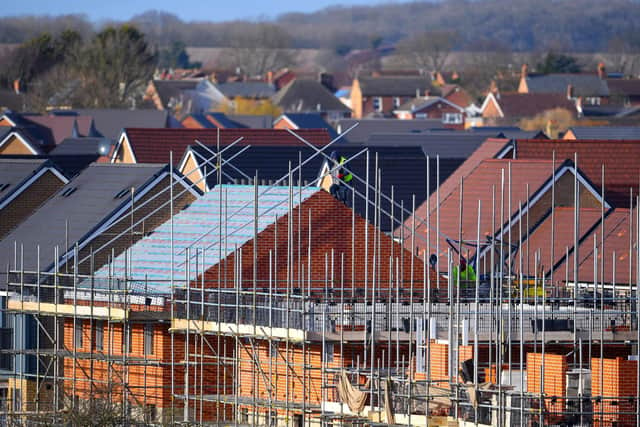Tory backbench revolt is a legacy of the inability of NIMBYs to support small scale housing - Hugh Roberts
Communities are rightly frustrated that these applications are then able to get permission despite local opposition, however instead of looking at the root cause of the issue in local councils’ response to housing needs, the blame is put on the developers.
Often, our towns and villages have a particular sense of place, which has evolved over the decades and centuries. We see this in the historic core of most settlements, usually terraces of Victorian and Georgian origin, interspersed with earlier origin. As you move out of the centre, pre-war, inter-war and post-war development can be seen.
Advertisement
Hide AdAdvertisement
Hide AdSince the latter half of the 20th century, most of these communities have frozen in time, with conversion or infill being the only way to add to the housing stock; this puts pressure on shops and community facilities, which become more valuable as development sites than their initial use, but most of these opportunities have now been eaten up.


Smaller development has been resisted with staunch opposition from residents’ groups, wishing to continue this deep-freeze of settlements. Their disbelief at speculative development of hundreds of houses needs to be judged against this, as the inability to support local development, piecemeal and recognising the incremental growth pattern of a settlement would have prevented these developments in the first place.
Ask any local resident what they would prefer – either 200 houses on the edge of their town at once, or pockets of development of 10-20 houses over a decade or so, and the latter is often the choice. However, when it comes to choosing policies to support growth like this, councillors and officers are at a loss as every small scale development is staunchly opposed by the neighbours who live nearby or overlooking the site (usually they live in the houses built on the field which used to be a view for someone else).
If local residents want to stop national developers building huge estates with no sense of place, then recognise that opposing a development of 5 or 10 houses by your local house builder or landowner contributes directly to that which you wish to prevent.
Advertisement
Hide AdAdvertisement
Hide AdTwenty-five per cent of our houses were built by local house builders in 2008, this now stands at one in ten as most small developers have gone to the wall thanks to lack of land supply to keep them going. Our housing stock rests in the hands of a cartel of national house builders because they have the funding and expertise to fight these NIMBY neighbours at appeal with the Secretary of State.
Local action groups need to get with the times, pick their battles and view each application in the round. Stopping that five-unit housing scheme may seem like a big win at the time, but when the nationals roll in with their 200-unit scheme incorporating that same parcel of land they will be sorely sorry – no doubt blaming everyone but themselves and trying to relegate another generation to only dreaming of owning their own home.
Hugh Roberts is a land director at Richard Roberts.